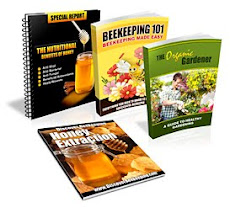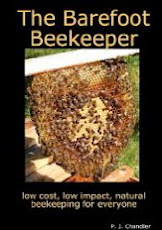
Months in this article relate to the northern hemisphere cool temperate climate.
APRIL
In the beehive:
With blossom time well underway, the bee colony is also increasingly active. The bees are busy foraging, building and raising new bees. However, to say that the bees are at the beginning of a long foraging season is not quite true. Often the honey flow does not begin until May and ends at the beginning of July. April shows which of the colonies will be able to survive. The winter colony, with its long-lived bees, becomes a summer colony with short-lived bees. It is a good sign when this process of transformation starts late and a great mass of winter bees is available to take advantage of the early honey flow.
Jobs for the beekeeper:
A fine day in April is the time to carry out the first major inspection of the colony. Dirt and debris should be removed from the floors of the hive. If the colony is strong and large, it can be extended. Combs and drone frames, lightly sprayed with honey solution, can be introduced into the hive - but not until the first cherry trees are in blossom, because cherry blossom time is building time.
Rear-opening hives can be extended by gradually adding frames of foundation and empty frames. The frames of foundation are hung by the brood nest, taking care not to disturb anything. Any colonies, which are unsettled or queenless, should be united with others. For queenless colonies this is easy: the bees are shaken onto a cloth near the hives and then beg an entrance into other colonies. Weak colonies will have a bad queen, and it is advisable to find her and kill her. The bees can then be treated as above.
Any brood comb or comb filled with food can be hung in other hives. In a hive with supers a complete colony can be united with another quite easily. The queenless colony is simply put on top of another colony in its original hive. A newspaper soaked in honey, with small holes in it, is placed between the two. This allows the colonies, with their different odours, to get to know each other slowly. Gradually they bit through the paper.
As a rule of thumb, it is important to remember that strong colonies grow stronger and weak colonies weaker. If the weather is bad and the honey flow late, it may be necessary to feed the bees. This is a time when both bees and brood need lots of food. They must get it before they have an acute shortage, so they may need to be fed as early as Match. From April onwards you will need to check the quality of the combs.













